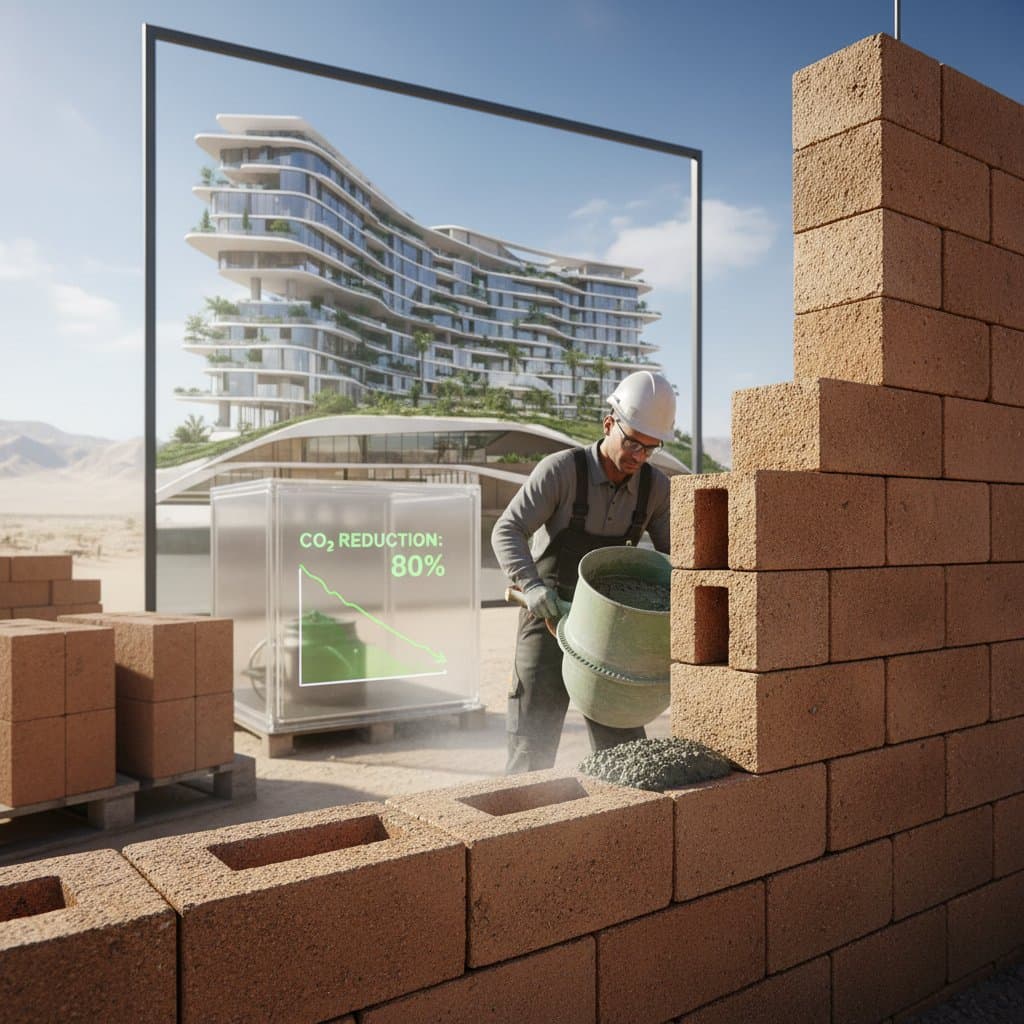Zero-Cement Bricks Lead Sustainable Masonry Trends in 2025
The construction sector increasingly prioritizes eco-friendly materials, positioning zero-cement bricks as a pivotal innovation. These bricks substitute traditional Portland cement with geopolymer binders, yielding superior strength, longevity, and minimal environmental impact. This resource outlines the essentials of zero-cement bricks, their manufacturing process, and their projected dominance in masonry applications. Readers gain insights into their sustainability features, comparative performance against cement alternatives, and key project planning elements.
Key Takeaways
- Cost Breakdown: Zero-cement bricks carry an initial premium of 5 to 15 percent over cement bricks, with project expenses distributed as 40 percent for materials, 45 percent for labor, and 15 percent for equipment.
- Curing Duration: Full strength develops in 7 to 14 days, significantly shorter than the 21 to 28 days required for cement bricks.
- Strength Metrics: Compressive strength ranges from 5,000 to 8,000 PSI, surpassing the 3,000 to 5,000 PSI of standard concrete bricks.
- Emissions Reduction: Production processes lower CO₂ output by up to 80 percent compared to conventional cement masonry.
- Adoption Criteria: Evaluate regional material access, environmental conditions, and regulatory approvals prior to implementation.
Fundamentals of Zero-Cement Bricks
Zero-cement bricks, commonly known as geopolymer bricks, incorporate industrial by-products such as fly ash, slag, or calcined clay in place of cement. These materials, rich in aluminosilicates, undergo activation with alkaline solutions like sodium silicate and sodium hydroxide to create a robust binder. The outcome delivers exceptional structural performance alongside resistance to elevated temperatures, corrosive substances, and excess moisture.
Challenges with Conventional Cement
Portland cement production demands substantial energy and generates significant pollution. The process involves limestone calcination and intensive kiln heating, accounting for a substantial portion of worldwide carbon emissions. Industry leaders and regulators seek substitutes that match or exceed performance while minimizing ecological harm. Zero-cement bricks address these demands, enhancing attributes such as thermal retention and shape consistency.
Project Planning Essentials
Sourcing Materials and Assessing Costs
Transitioning to cement-free options requires evaluating the proximity of industrial by-products like fly ash or slag, which form the core of geopolymer formulations. Proximity reduces transportation expenses and supports cost efficiency. For a standard wall assembly, expect expenditures of 8 to 12 dollars per square foot, varying by location and surface treatments. Over time, benefits accrue through decreased upkeep and infrequent repairs.
Navigating Permits and Regulations
Building authorities might lack comprehensive guidelines for geopolymer products. Verify if local codes necessitate performance testing or official endorsements for approval. Numerous jurisdictions now permit these materials under provisions for green building or innovative alternatives, contingent on satisfying strength and endurance benchmarks.
Site Preparation Guidelines
Effective masonry begins with thorough site readiness, applicable to zero-cement projects as well. Establish a firm, even base with adequately cured and compacted footings. Incorporate moisture barriers for external structures to inhibit water absorption. Account for the increased density of these bricks, which imposes dead loads 5 to 10 percent higher than traditional variants, ensuring foundational adequacy.
Detailed Installation Procedures
1. Preparing the Mix
Blend the geopolymer binder with aggregates and water following precise manufacturer specifications. Target an activator-to-binder ratio of 0.4 to 0.5 by weight to secure optimal workability.
2. Laying the Bricks
Apply a matching geopolymer mortar for assembly. Standardize joint widths at 3/8 inch. Regularly employ levels and plumb lines to preserve straightness and verticality.
3. Managing Curing
Opt for thermal or environmental curing methods suited to zero-cement bricks. Sustain temperatures near 100°F for initial days when feasible, or permit natural curing over one to two weeks.
4. Conducting Inspections
Post-curing, examine selected units for strength via compression tests and verify dimensions. Surfaces must exhibit evenness, free from efflorescence or fissures exceeding 1/32 inch.
Resolving Typical Issues
- Inconsistent Curing: Arises from variable temperature or humidity; employ enclosures or coverings to stabilize conditions.
- Inadequate Adhesion: Stems from imprecise activator proportions; weigh components accurately rather than estimating volumes.
- Drying-Induced Fractures: Signals overabundant water; adjust downward in subsequent preparations.
- Shade Inconsistencies: Traces to variable inputs; integrate raw elements uniformly prior to batching.
Long-Term Care and Durability
These bricks demand little ongoing attention. Perform yearly reviews for subtle fissures, mortar wear, or buildup. Employ gentle soap and water for cleansing; steer clear of acids that might compromise the geopolymer matrix.
Choosing Between DIY and Expert Installation
Ambitious homeowners can tackle non-load-bearing features like garden enclosures, potentially cutting labor costs by 20 to 30 percent, though tool rentals may balance this. Delegate load-bearing, elevated, or certified endeavors to qualified professionals including masons and structural specialists.
Expert Recommendations for Optimal Results
- Safeguard dry storage for precursors to avert premature reactions.
- Don personal protective equipment, including gloves, eye shields, and respiratory masks, during activator handling.
- Standardize batch volumes to ensure consistent properties.
- Document formulations, timelines, and evaluations systematically.
- Integrate with advanced insulation for amplified energy efficiency.
Integrating Geopolymer Bricks for Lasting Impact
Zero-cement bricks advance beyond novelty, embodying enhanced responses to ecological and engineering requirements. Their blend of robustness, accelerated setup, and low-emission profile establishes them as viable replacements for cement standards. Incorporate these into residential builds or upgrades to elevate both functionality and environmental stewardship.
